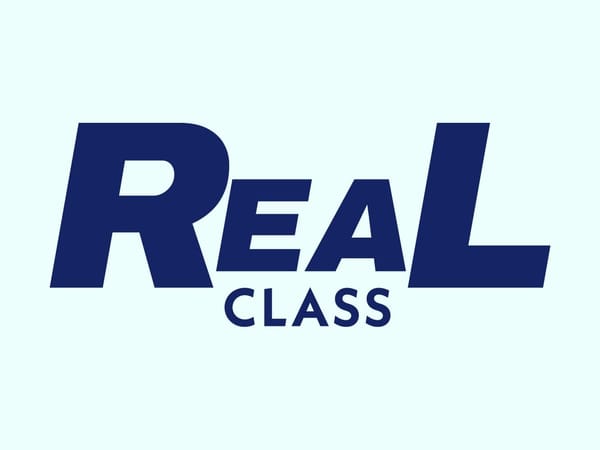Same As It Ever Was
The rugby league soap opera is stuck on a permanent cliffhanger.

It is over half a century since the RFL’s much-maligned secretary Bill Fallowfield admitted the sport had run out of ideas on how to arrest the decline in its popularity. “We try hard,” he said, “but your guess is as good as mine as to why the bloody public doesn’t come.”
The saga is chronicled in Anthony Broxton’s book, ‘Hope & Glory: Rugby League in Thatcher’s Britain’. Unsure of the direction the game was heading, the RFL hired Manchester consultancy firm John Caine Associates for £3,000 a year to conduct a review of the game and come up with some ideas the governing body were unable to think of. Despite much anticipation in the media, who dubbed him ‘the Manchester wizkid’, Caine soon found an ‘inexplicable reluctance’ from Fallowfield to answer his letters on the ‘important matters’. When he presented his findings to the RL Council and explained his criticisms — including a failure of leadership and an outdated and dwindling media profile — he also proposed some recommendations. They ranged from the radical (reducing the game to eleven-a-side) to the practical (‘creating a smaller governing body and an outside chairman to manage the game’s affairs’).
Fallowfield had little interest in Caine’s proposals, and engineered a vote of confidence in his own leadership before Caine could deliver a follow-up report detailing how the changes could be made, and by 1972 the consultancy contract ended. As Broxton concludes:
The RFL, it seemed, was powerless to address the problem that its own research had identified.
The tectonic plates of rugby league shift so quickly and regularly that we often unknowingly end up back where we started, before deciding which direction we want to veer off next. The latest RFL coup is the perfect case in point. Having acknowledged the shortcomings in their own governance, in May 2022 Super League clubs and the RFL announced a twelve-year strategic partnership with IMG ‘to reimagine rugby league and its competitions in the UK’. Just like John Caine Associates, IMG were tasked with plotting the way forward for the sport on these shores, albeit at £450,000 a year they were costing the game a lot more than the Manchester wizkid. More importantly, just like John Caine Associates, the game’s stakeholders had the chance to vote down anything IMG came back with that they didn’t like.
So here we are, over fifty years on from John Caine’s initially ignored recommendations, with those in charge of actually making the decisions deciding once again they’d be better off saving their money on external consultants and seeing if they can come up with anything better themselves instead. After a leadership challenge led by Leigh owner Derek Beaumont and Leeds chief executive Gary Hetherington, RFL chairman Simon Johnson headlined a raft of resignations at the governing body, with former RFL CEO and Bradford chairman Nigel Wood instated as the interim chair to begin their own ‘club led strategic review of policy and direction’.
I launched Real Class to write and talk more about the matches and players the sport prides itself on rather than the endless debates around its governance, but this has got simply too juicy to ignore. In a cocktail of egos, backstabbing, and political manoeuvring, it’s been a while since the soap opera of rugby league has felt so melodramatic. Asked by BBC Radio Manchester in February about reports he was behind a leadership coup, Beaumont compared the situation to being “on a boat and someone shoots your captain” — conveniently ignoring the fact that he was one of the people with their hands on the trigger.
We don’t have to go all the way back to the seventies for the origins of the ripple effect these changes have emanated from. In the more recent past of 2018, Super League club owners decided they’d had enough of the RFL’s vision under some bloke called Nigel Wood and split to form their own governing body. Or at least some of them did. In the press conference to announce a new Super League chief executive officer in Robert Elstone, who it was hoped would be an independent figure who could lead the sport away from the often contradictory opinions of its club owners, Elstone was flanked by the owners of Wigan, Warrington, and St Helens. Less than three years later, with costs rising, sponsorship income decreasing, and plenty more money spent on — you guessed it! — consultancy fees, Elstone was gone as Super League clubs gave up on their own idea and realigned with the RFL.
As Leeds’ figurehead, Hetherington was one of the main dissenting voices in siding with the RFL. "Today's announcement regarding plans for next season appear to be an absurd grab for power for the game by a small group of men who think they own the game," he said at the time, which makes it all the weirder he has now chosen to be one of the main figures in leading a coup against the governing body that he successfully sought to realign Super League with. He and Beaumont make a particularly strange odd couple. Despite being a presence in boardrooms since founding Sheffield Eagles in 1984, Hetherington has generally been a quiet practitioner of influence — certainly in more recent years at least — whereas Beaumont is the rent-a-quote of rugby league who was recently filmed dancing on a motorbike in a Las Vegas nightclub with Warrington coach Sam Burgess.
Viva..? pic.twitter.com/vWDOwCUmYP
— Leigh Leopards (@LeighLeopardsRL) March 2, 2025
The main question surrounding this whole story is a simple one. Why? Namely, why put so much faith in Nigel Wood to return as interim chair when he was deemed so unsuitable in the decision to split from the RFL and appoint Elstone seven years ago?
Wood’s supporters will point to him negotiating some of the biggest TV deals in Super League’s history (from a high of £40m a season it is now down to around £21m and approaching renewal, albeit in a vastly different landscape to the one Wood operated in). But ultimately he’s the guy it was deemed necessary to pay a severance package of over £300,000 to get out of the way in a year when the RFL lost more than £2m. In his original stint as RFL CEO, Wood was involved in the governing body purchasing the lease for Bradford’s Odsal stadium. By the time he left his position, it had decreased in value by around £500,000. Wood has just so happened to have returned as the RFL’s interim chair after six years as Bradford’s major shareholder, where one of his final acts was to buy back the Odsal lease from the RFL at a fraction of the price it was sold for.
The most obvious answer to the big ‘why?’ at the heart of all this is equally simple: Salford. In patiently sitting back and hoping Salford’s financial meltdown and botched takeover would solve itself, the RFL failed to satisfy anyone and left themselves open to a challenge. With the RFL having loaned Salford a £500,000 advance on their central funding and failed to enforce £800,000 in salary cutbacks, it has since become apparent that Salford’s new investors — a consortium led by Swiss investment banker Dario Berta that includes Saia ‘Big Sire’ Kailahi, a rapper and lifelong friend of former Salford player Krisnan Inu, whose previous business acumen involved booking Timbaland for a five-date tour of Australia he never showed up for — were planning on developing the council-owned Salford Community Stadium and land around it, only to learn the rugby league club that plays there is financially fucked and accidentally buy that before having the required funding in place.
“The plan of buying the stadium and redeveloping the area was the main piece of work,” a source close to the deal told The Sun last week. “We planned to provide the club with a 20 per cent ownership of the stadium, which would have improved their balance sheet. However, the club's financial position meant they had to buy it. Firstly, not all of the funds were in place because we planned to buy the stadium in April/May, and secondly, Salford Red Devils are in a really poor financial position, which alarmed investors, causing even more delays.”
Those investors were unsurprisingly justified in their alarm, which begs another question: why weren’t those leading the takeover of the Red Devils alarmed too? Instead, we’re now at stasis. Players and staff were paid late last month, while Salford’s new ownership insist the hold-up in funds is due to banks only processing $100,000 AUD at a time, which doesn’t explain A) why they are waiting for a significant figure to accumulate into their bank account before they can start spending any of it (February’s salaries were paid with money from the personal account of Kailahi), B) why Salford are now selling players to rival clubs, and C) why they think building a 5,000-seat arena in a location that struggles to attract 4,000 people every other week and a city that already has two arenas and a plethora of other venues is the secret to financial sustainability (let alone an advertising screen by the M60 motorway, which is another grand plan — if it was that simple, surely everyone would have one?).
It also doesn’t explain why Beaumont and Hetherington are so insistent that Wood is the man to help solve all these problems.
Hetherington’s role in this is slightly more nuanced, with the usurping of Johnson coinciding with his announcement that he will leave Leeds at the end of the season after 29 years in which he transformed the club’s fortunes. In the right light, it looks like the final play from an ageing mafia boss who has been patiently waiting in the background to remind a new generation of challengers of his authority. According to Forty20 magazine, Hetherington already has his next role lined up as London Broncos’ executive chairman after brokering a new investment deal that will see the second-tier club partner with the NRL’s Brisbane-based Dolphins.
With Super League desperate for outside investment and flirting with the idea of a NRL buy-in, Hetherington will be perfectly placed at a club that has already secured similar funds in a target market for the Australian competition with Wembley earmarked for an Ashes test in the Autumn and as a potential location for the season openers that have recently taken place in Las Vegas. It’s the type of wily wielding of soft power that Hetherington’s expected replacement as Leeds CEO, Jamie Jones-Buchanan, will have to learn quickly — although a younger, more dynamic figurehead like Jones-Buchanan might be what Leeds need to muscle in on conversations around events like Vegas at a club that has grown stagnant, and his ascent from local Leeds lad to the CEO of his boyhood club should be celebrated as a remarkable rugby league success story.
But what’s in it for everyone else? And why now? Neither Hetherington, nor Beaumont, nor Wood, nor anyone else has successfully communicated what Super League wants, needs, or looks like going forward amid all this wrangling over power and influence. With the negotiations for a new broadcast deal looming, from the outside looking in it feels like a panicked grab for as much cold, hard cash as possible. Or as Hetherington once put it: "An absurd grab for power for the game by a small group of men who think they own the game."
With clubs propped up by benefactors willing to lose over £1m of their own money each year, until they tell us what they think any revenue boost should be spent on then the Salford model of waiting for an ill-advised banker to accidentally buy you starts to look like a sensible idea after all. With a bit of luck, it should at least sustain a club until we do all this again in a few years’ time. ⬧




